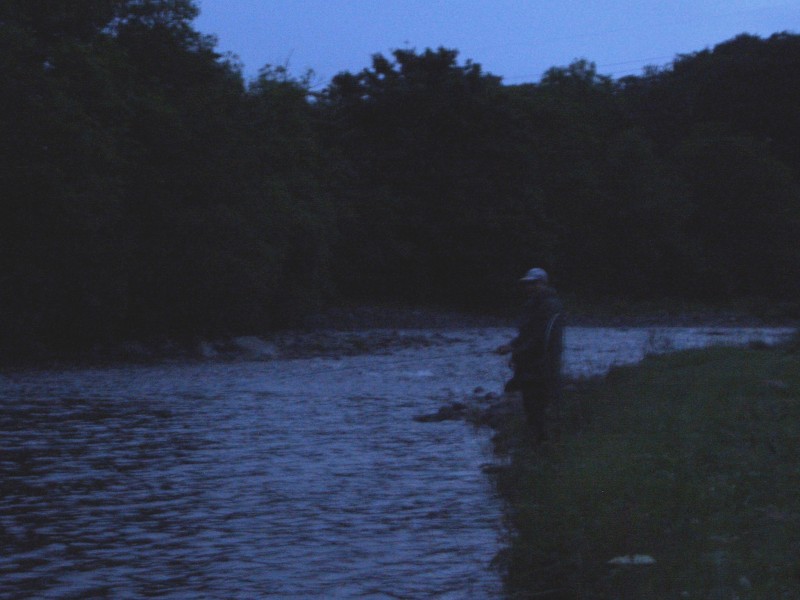These bulletin blogs represent news about Finavon and the South Esk, and my views as a riparian owner. They are not the views of any other organisation, nor are they designed to promote the interests of any individual or organisation other than Finavon Castle Water and factors affecting the fishery. Tony Andrews
Friends have been fishing at Cortachy, Downie Park and Inshewan, and what they have told me gladdens and saddens the heart simultaneously. Reports from Inshewan and holding pools upriver are of a spring run reminding us of the abundance of the 1960s when, if the temperature barrier of the Kinnaird Dyke allowed, large numbers of MSW salmon would fill the middle and upper river. With deep holding pools from Justinhaugh up to Dunbog Farm all holding good numbers of spring salmon ranging in size from 7lbs to over 20lbs you would have thought that any fisherman or riparian owner would be uncritically content.
Sadly the world doesn’t operate like that, nor do salmon rivers. The abundance of fish, their overcrowding into deeper pools, and the low water in April & early May, have led to an outbreak of a fungal infection (saprolegnia). On the North Esk the situation is much worse, but of course they have more fish. Both Inshewan and Finavon on the S Esk are reporting dead, fresh-run salmon covered in fungus being taken from the river and buried. I am sure the same is true of Cortachy and Downie Park. Those dead salmon that aren’t found by river staff are eaten by otters (or by labradors if you are unlucky enough to be beside the river with your dog!). I know of at least 60 dead salmon taken out of the middle river, and there will be many others lower down and in the upper reaches. Let us guess that we have lost 200 salmon to disease and that the Usan nets have already killed about 800 spring salmon (60% of which might reasonably be expected to ‘belong’ to the S Esk), and still there are many fish showing in our pools. Based on observation and the catches we have seen recorded, it is not unreasonable to suppose that more than 1,500 salmon, perhaps as many as 2,000, have run the South Esk to date in 2011. If that is the case it is also true that the spring stock, in this year at any rate, is not so fragile as we thought it might be. While there’s no room for complacency, it is very encouraging that there are still spring fish in the river
Of course one swallow doesn’t make a summer, but it is also true that the 2010 run of spring salmon indicated a reasonable return of adult salmon, despite the poor rod catches resulting from low water yet again. The evidence therefore suggests that there appears to be a surplus year-on-year. The problem is that we really don’t have much idea of what the spring stock component conservation level is (or should be) and therefore it is impossible to state with any confidence whether that surplus can be ‘harvested’ without damaging stocks. We don’t know how many salmon and grilse run the South Esk. We only have rod catch statistics to tell us what the trends are. But I will hazard a guess that the five-year average of returning adults into the South Esk, based on 60% of Usan net catches and the declared rod catch, plus our own observations, is somewhere around 10,000 fish. I base this figure on 1,500 MSW fish up to 31 May, 3,000 salmon and grilse in June, July and August and 5,500 salmon and grilse from 1 September until spawning time (ie including salmon that enter the river after the close season on 31/10) There you are: I’ve put a salmon number on the South Esk! I could argue that my estimate should stand, despite its being based on guesswork, until someone provides the evidence to show that I am wrong. I wish someone would, if only to show that he/she has better evidence than my semi-educated guesses! One thing about making estimates in this way is that with refinement and new data they can only improve! What I can say, and this statement is backed up by some of the UK’s most knowledgeable fishery biologists, is that the South Esk is a very fertile little river which might produce figures something like this: Please note this is guesswork. I would welcome an informed challenge to these figures.
Average number of South Esk salmon and grilse killed by mixed stocks nets = c. 2,500*
Total number of salmon and grilse entering the River = c. 10,000*
Total number of spawning females, allowing for 20% in-river losses = c.4,000
Average weight of spawning hen salmon = c. 8 lbs
Average number of eggs deposited by each hen fish = 4,500
Total number of eggs deposited in South Esk catchment (4,500 X 4,000) = c.18 million
Estimated number of smolts produced annually by S.Esk (say 1% of total deposited eggs) = c.180,000*
Assume percentage of smolts returning as grilse is about 8% and of MSW fish about 5% (average 6.5%)
6.5% of 180,000 = c. 11,700 salmon and grilse arriving off the Angus coast (PFA) prior to nets exploitation.
While these figues do work – well, sort of – I have asterisked the ones I feel are priorities for investigation. As I say, this is my best guess after more than 35 years of observing runs of salmon in the South Esk. I would be interested to see what our fishery board’s estimate is, but only if accompanied by the data – e.g. evidence such as juvenile counts, redd counts and fertile wetted area calculations as applied by the Environment Agency in England.
I will certainly return to these figures and refine them as more data becomes available.
TA



